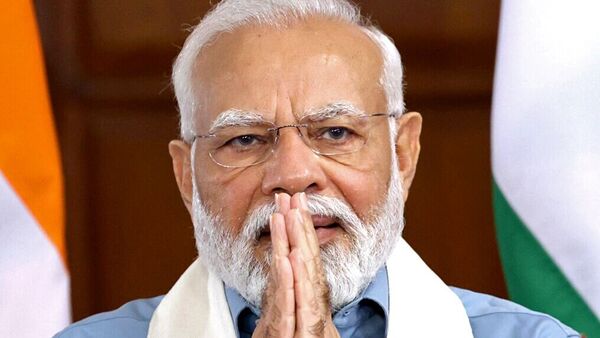Prime Minister Narendra Modi lauded ISRO for the successful launch of India’s inaugural space-based solar observatory, Aditya-L1, on Saturday.
The Prime Minister declared that India’s scientific efforts will continue “to develop a better understanding of the Universe for the welfare of entire humanity.”
Taking to social media platform X, the PM said, “After the success of Chandrayaan-3, India continues its space journey. Congratulations to our scientists and engineers at @isro for the successful launch of India’s first Solar Mission, Aditya -L1. Our tireless scientific efforts will continue in order to develop better understanding of the Universe for the welfare of entire humanity.”
Today at 11.50 am, the Aditya-L1 orbiter was successfully launched into space aboard the PSLV-C57.1 rocket from the Satish Dhawan Space Centre in Sriharikota, Andhra Pradesh. This achievement follows closely after ISRO’s historic lunar mission, Chandrayaan-3.
Following the launch, ISRO confirmed that the Aditya L1 spacecraft’s payload had been detached as it departed Earth’s atmosphere.
“The third stage of the separation of PSLV carrying the Aditya-L1 orbiter has been completed,” as per ISRO.
ISRO announced the successful completion of the Aditya-L1 launch by PSLV-C57, confirming that the satellite had been accurately positioned in its designated orbit. The inaugural solar observatory of India has initiated its mission towards the Sun-Earth L1 point, as per the agency’s statement.
The Aditya-L1 mission is projected to reach its observation point in approximately four months. It will be positioned in a halo orbit encircling Lagrangian Point 1 (L1), located 1.5 million km from Earth in the direction of the sun. The spacecraft will carry seven distinct payloads, with four dedicated to studying sunlight and the remaining three designed for measuring on-site plasma and magnetic field parameters.
The most substantial and intricate component aboard Aditya-L1 is the Visible Emission Line Coronagraph, known as VELC. VELC underwent integration, testing, and calibration at the Indian Institute of Astrophysics’ CREST (Centre for Research and Education in Science Technology) facility in Hosakote, in partnership with ISRO.
This setup will empower scientists to conduct real-time research on solar activities and their influence on space weather.
Furthermore, the data obtained from the spacecraft will aid in identifying the series of events that culminate in solar eruptive occurrences, thereby enhancing our comprehension of the factors influencing space weather.
Key goals of India’s solar mission encompass investigating the physics governing the solar corona’s heating process, understanding solar wind acceleration, exploring the interconnection and dynamics of the solar atmosphere, analyzing the distribution and temperature disparities in solar wind, as well as investigating the origins of Coronal Mass Ejections (CME) and solar flares, along with their effects on near-earth space weather.
As per the Indian Institute of Astrophysics located in Bengaluru, the sun’s outer layer known as the corona is observable only during a total solar eclipse. However, a device like the VELC coronagraph functions by blocking the sun’s disk’s light, enabling continuous imaging of the relatively dimmer corona under all circumstances.
Also Read: Aditya-L1 Mission Successfully Launched, EAM Jaishankar Hails “Another Feather in ISRO’s Cap” —

















